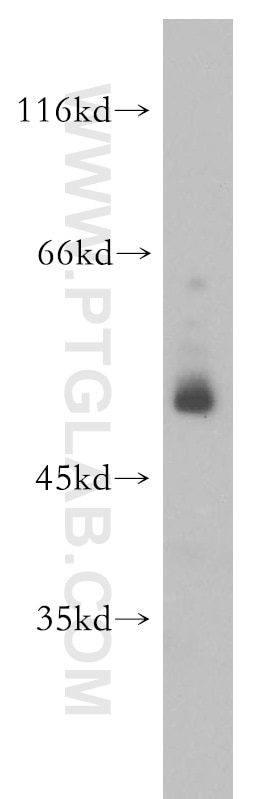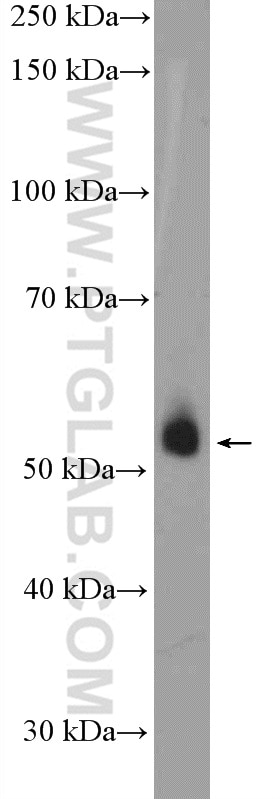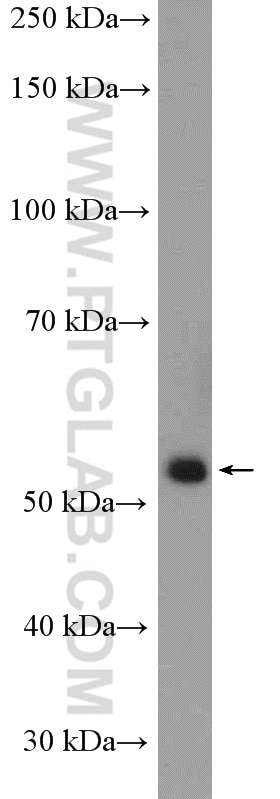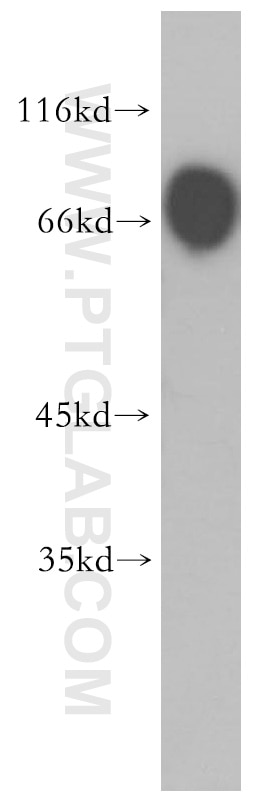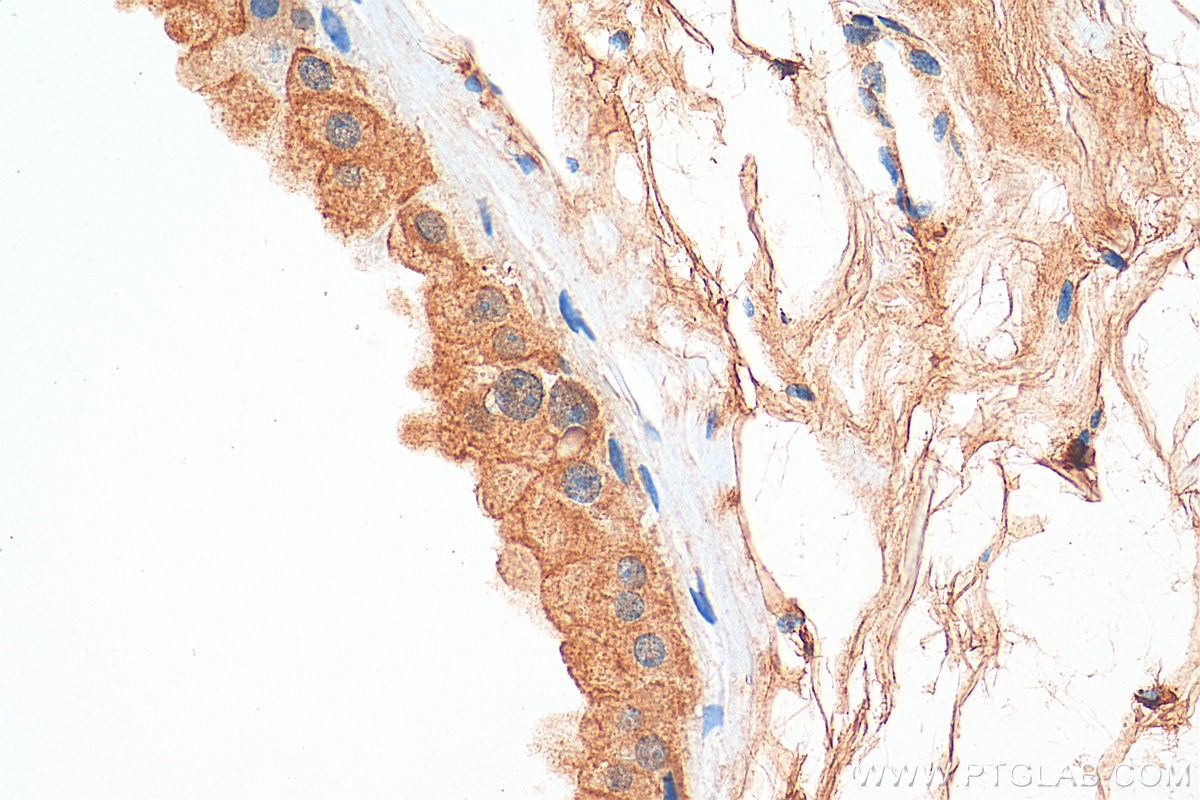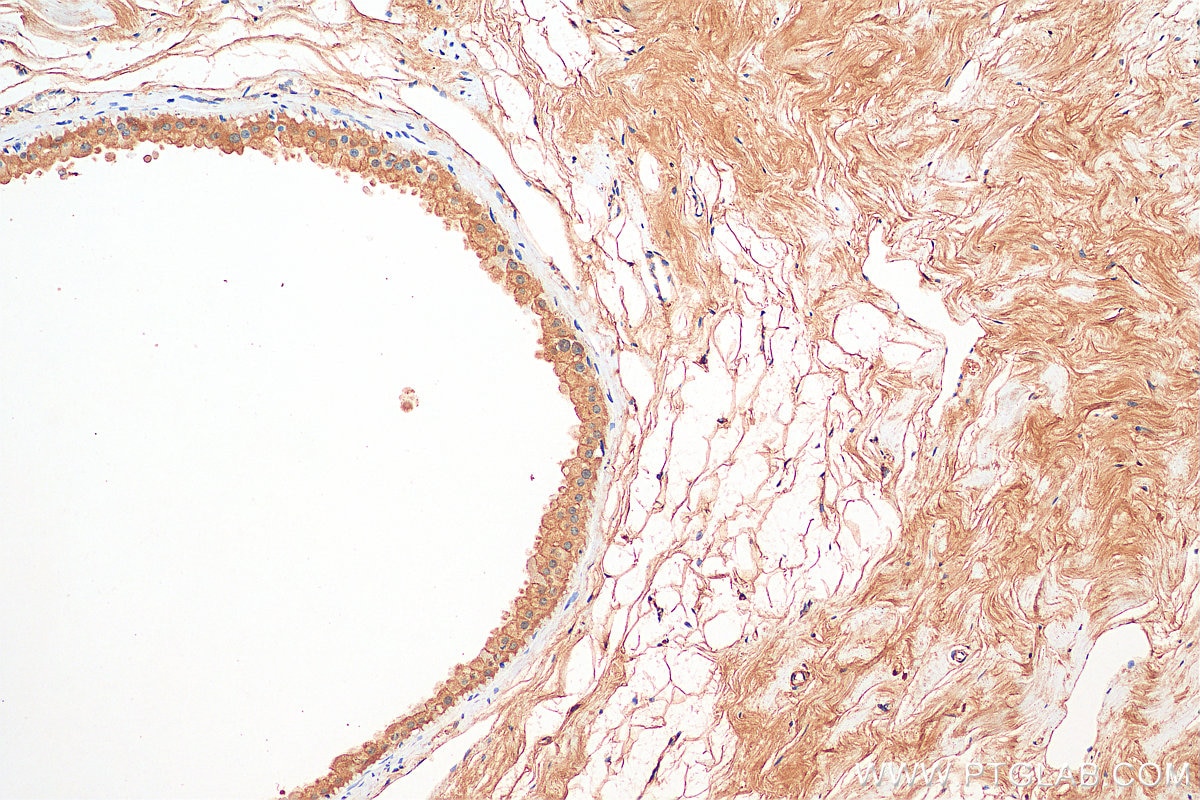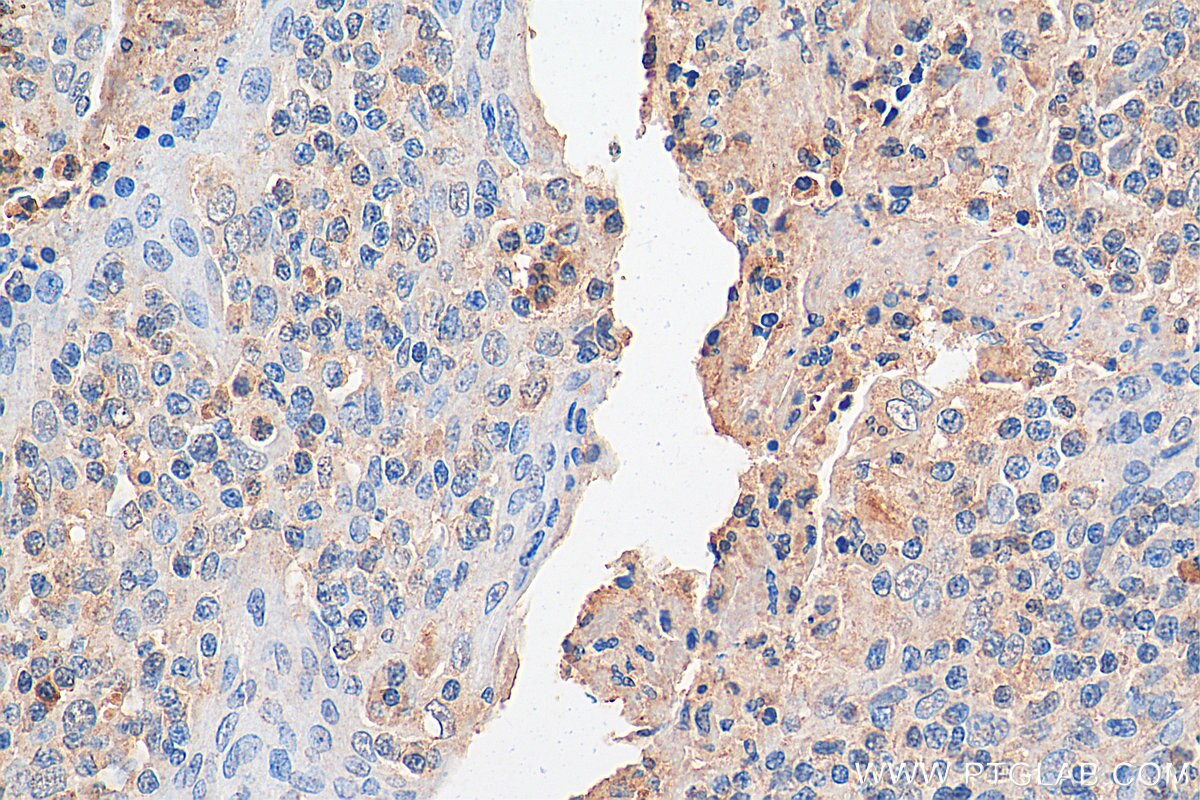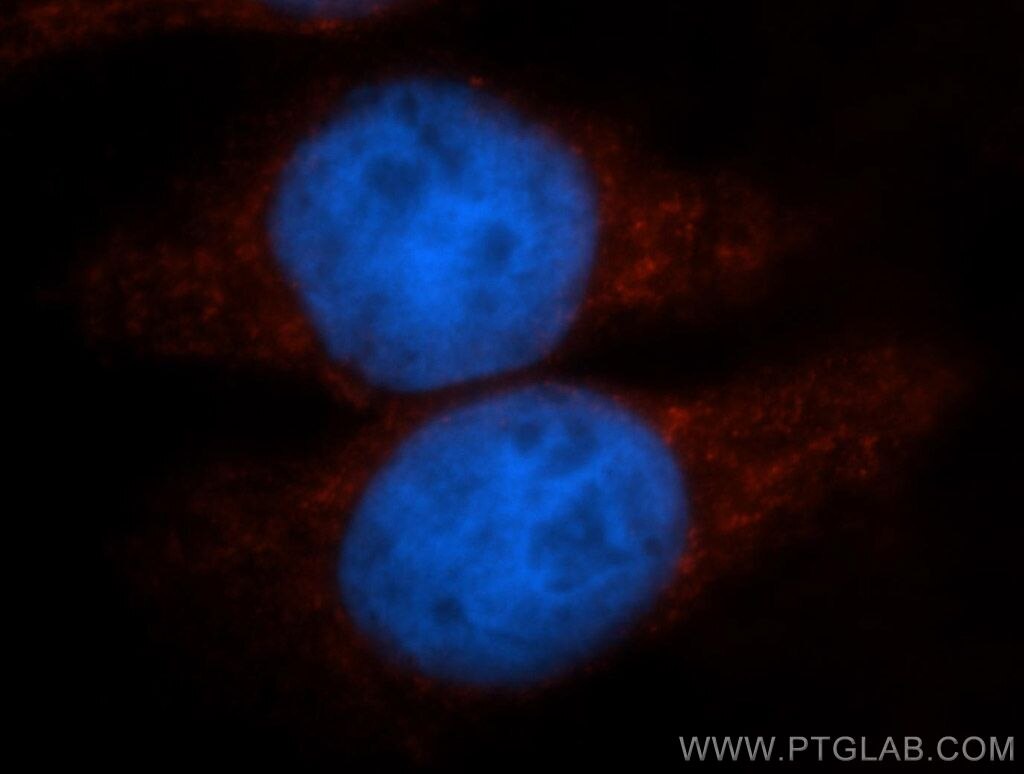PER1 Polyklonaler Antikörper
PER1 Polyklonal Antikörper für WB, IHC, IF/ICC, ELISA
Wirt / Isotyp
Kaninchen / IgG
Getestete Reaktivität
human, Maus, Ratte
Anwendung
WB, IHC, IF/ICC, ELISA
Konjugation
Unkonjugiert
Kat-Nr. : 13463-1-AP
Synonyme
Galerie der Validierungsdaten
Geprüfte Anwendungen
| Erfolgreiche Detektion in WB | A549-Zellen, humanes Hirngewebe, Mauslebergewebe, Mausnierengewebe |
| Erfolgreiche Detektion in IHC | humanes Mammakarzinomgewebe, humanes Tonsillitisgewebe Hinweis: Antigendemaskierung mit TE-Puffer pH 9,0 empfohlen. (*) Wahlweise kann die Antigendemaskierung auch mit Citratpuffer pH 6,0 erfolgen. |
| Erfolgreiche Detektion in IF/ICC | HeLa-Zellen |
Empfohlene Verdünnung
| Anwendung | Verdünnung |
|---|---|
| Western Blot (WB) | WB : 1:500-1:3000 |
| Immunhistochemie (IHC) | IHC : 1:50-1:500 |
| Immunfluoreszenz (IF)/ICC | IF/ICC : 1:20-1:200 |
| It is recommended that this reagent should be titrated in each testing system to obtain optimal results. | |
| Sample-dependent, check data in validation data gallery | |
Veröffentlichte Anwendungen
| WB | See 10 publications below |
| IHC | See 3 publications below |
| IF | See 1 publications below |
Produktinformation
13463-1-AP bindet in WB, IHC, IF/ICC, ELISA PER1 und zeigt Reaktivität mit human, Maus, Ratten
| Getestete Reaktivität | human, Maus, Ratte |
| In Publikationen genannte Reaktivität | human, Maus |
| Wirt / Isotyp | Kaninchen / IgG |
| Klonalität | Polyklonal |
| Typ | Antikörper |
| Immunogen | PER1 fusion protein Ag4249 |
| Vollständiger Name | period homolog 1 (Drosophila) |
| Berechnetes Molekulargewicht | 1290 aa, 136 kDa |
| Beobachtetes Molekulargewicht | 50-55 kDa |
| GenBank-Zugangsnummer | BC028207 |
| Gene symbol | PER1 |
| Gene ID (NCBI) | 5187 |
| Konjugation | Unkonjugiert |
| Form | Liquid |
| Reinigungsmethode | Antigen-Affinitätsreinigung |
| Lagerungspuffer | PBS mit 0.02% Natriumazid und 50% Glycerin pH 7.3. |
| Lagerungsbedingungen | Bei -20°C lagern. Nach dem Versand ein Jahr lang stabil Aliquotieren ist bei -20oC Lagerung nicht notwendig. 20ul Größen enthalten 0,1% BSA. |
Hintergrundinformationen
PER1 is a master regulator of circadian rhythm and functions in the nucleus to repress expression of the central circadian clock genes. The periodicity of PER1 abundance, nuclear translocation, and transcriptional repression is regulated by PER1 phosphorylation, ubiquitination, and proteasomal degradation [PMID: 21514639]. It is one component of the circadian clock mechanism which is essential for generating circadian rhythms. It can influences clock function by interacting with other circadian regulatory proteins and transporting them to the nucleus [PMID: 9856465, 20930143]. In addition to bands of the predicted molecular mass of 140 kDa, additional PER1 species of 55 and 45 kDa is detected that is predominantly nuclear [PMID: 11726537] .
Protokolle
| Produktspezifische Protokolle | |
|---|---|
| WB protocol for PER1 antibody 13463-1-AP | Protokoll herunterladen |
| IHC protocol for PER1 antibody 13463-1-AP | Protokoll herunterladen |
| IF protocol for PER1 antibody 13463-1-AP | Protokoll herunterladen |
| Standard-Protokolle | |
|---|---|
| Klicken Sie hier, um unsere Standardprotokolle anzuzeigen |
Publikationen
| Species | Application | Title |
|---|---|---|
Cell Metab Dysfunctional circadian clock accelerates cancer metastasis by intestinal microbiota triggering accumulation of myeloid-derived suppressor cells | ||
Theranostics Development of human cartilage circadian rhythm in a stem cell-chondrogenesis model. | ||
J Transl Med Prognostic risk factors of serous ovarian carcinoma based on mesenchymal stem cell phenotype and guidance for therapeutic efficacy | ||
Int J Mol Sci Uncovering the Novel Role of NR1D1 in Regulating BNIP3-Mediated Mitophagy in Ulcerative Colitis | ||
J Agric Food Chem Capsaicin Attenuates Oleic Acid-Induced Lipid Accumulation via the Regulation of Circadian Clock Genes in HepG2 Cells. |
Rezensionen
The reviews below have been submitted by verified Proteintech customers who received an incentive for providing their feedback.
FH Priya (Verified Customer) (01-05-2023) | The antibody works well. I have been using this antibody for human cardiomyocytes, human keratinocytes cell lines, and mouse tissues such as the liver and skin.
|
